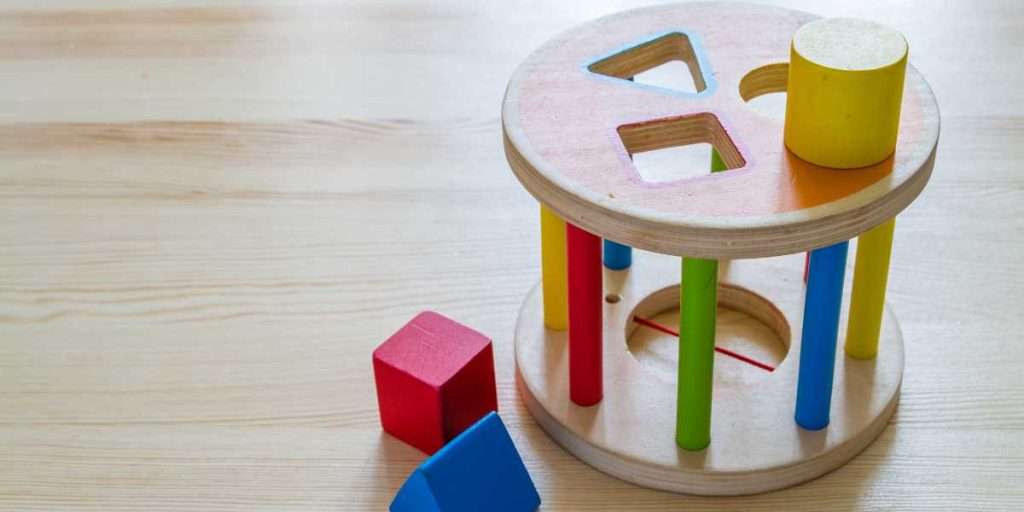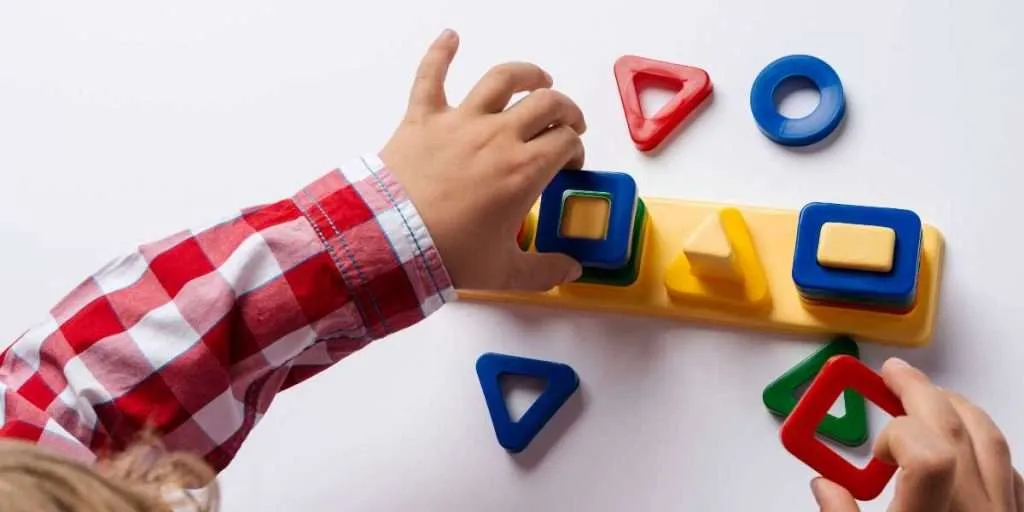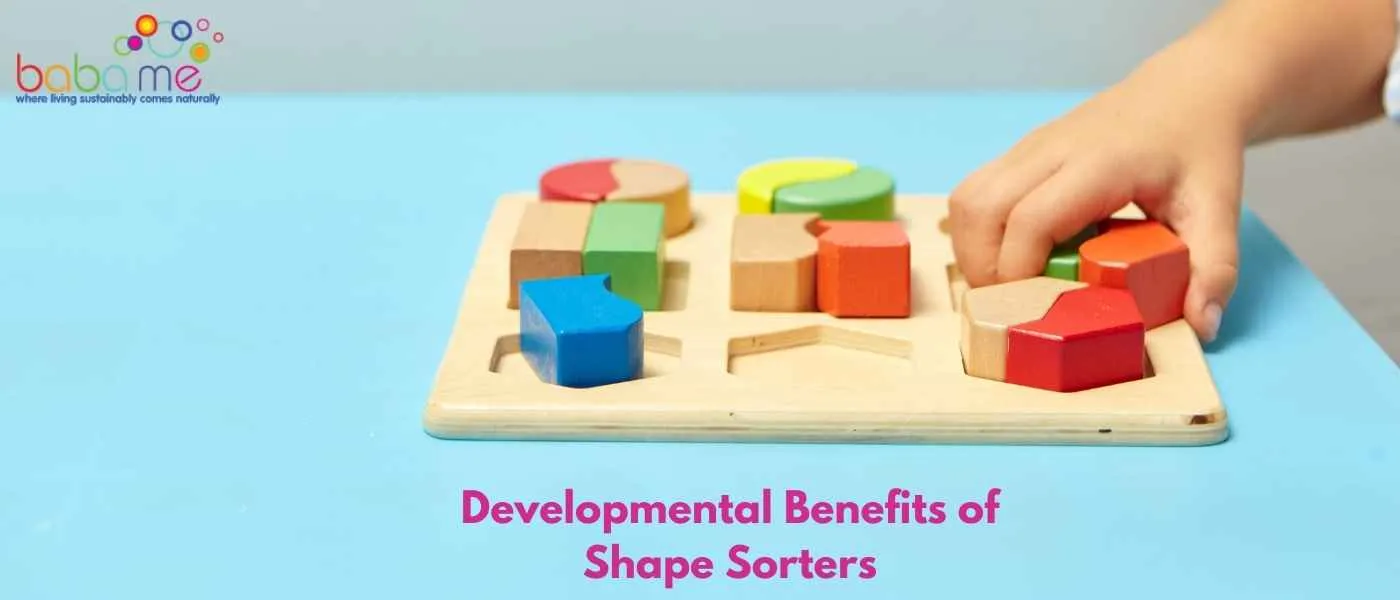Delving into the world of early childhood toys and curious about the benefits of shape sorters? You’re on the right track. Shape sorters, while seemingly simple, are powerful developmental tools that have been a staple in young children’s toy collections for generations.
Beyond just being fun, shape sorters offer a multitude of developmental benefits.
Drawing from my expertise in child development and play-based learning, I’ve pieced together a comprehensive guide that sheds light on the multifaceted benefits of shape sorters for young learners.
Let’s shape our understanding together, exploring how these shape sorter toys enhance cognitive development, fine motor skills, problem-solving abilities, and much more, laying a strong foundation for future learning.
Benefits of Shape Sorters
Shape sorters are classic toys that have been around for generations. While they may seem straightforward, a shape sorting toy will offer a rich array of developmental benefits for young children.
| Benefit | Description |
|---|---|
| Fine Motor Skill Development | Grasping, manipulating, and fitting shapes into the correct slots help to refine the small muscles in a child’s hands and fingers. |
| Hand-Eye Coordination | Aligning the shapes with the corresponding slots requires coordination between visual cues (what the child sees) and motor skills (how the child moves their hands). |
| Problem-Solving Skills | Determining which shape fits into which slot encourages children to think critically and problem-solve. |
| Spatial Reasoning | Understanding how different shapes relate to each other and their corresponding slots promotes spatial intelligence. |
| Cognitive Development | The trial-and-error nature of shape sorters—testing each slot until finding the right one—enhances cognitive growth and adaptability. |
| Color and Shape Recognition | Shape sorters often come in various colors and shapes, aiding children in distinguishing and naming them. |
| Cause and Effect | Children begin to understand that each shape only fits in its specific slot, reinforcing the concept of cause and effect. |
| Language Skills | As children play, caregivers can name shapes and colors, expanding a child’s vocabulary and comprehension. |
| Concentration | Focusing on matching each shape with its corresponding slot helps improve a child’s attention span and concentration. |
| Memory Enhancement | Over time, children may remember which shapes correspond to which slots, thereby enhancing their memory skills. |
| Social Skills | When played in a group setting, children can learn to take turns, share, and communicate their thoughts and strategies with peers. |
Shape sorters, with their multifaceted benefits, are excellent tools for fostering early developmental skills. It’s essential to ensure that the sorter toys are age-appropriate and made of safe, durable materials, especially given the tendency of young children to explore objects with their mouths.
Shapes and Colours
Shape sorter’s primary purpose is to help children learn about shapes through play. Almost all shape sorters come with a set of brightly-colours shaped pieces. You can teach your children about colours too.
Learning about shapes and colours at an early age is essential. Everything around us is made up of shapes and colours. It is an important foundational skill towards literacy and math.
Knowing a shape’s characteristics develops a child’s ability to sort and categorise objects and will help with vocabulary knowledge. Sorting is considered an early form of math and helps with thinking skills and problem solving.

Math
Letters and numbers are made up of shapes. When a child knows what a circle looks like then she’ll identify the letter 0 and the number 0. In order to identify a shape, one must know how many sides it has.
Knowing how many sides a shape has involves counting. Also, geometry is a branch of math that kind of involves the study of shapes.
Problem solving and patience
A shape sorter toy will provide children plenty of opportunity to solve a problem on their own. Encouraging your child to keep trying when she fails helps build confidence.
It also improves her problem-solving skills. You can give them tips and teach patience until they fit the shapes into the right holes. Do not forget to compliment them when they do. It boosts and builds her self-confidence.
Fine motor skills and hand-eye coordination
Playing with shape sorters (from a young age) often involves repeated action. It may take several attempts before a child who is still learning about shapes to fit the shape pieces into the right holes in the sorter. This action helps develop a child’s fine motor skills and hand-eye coordination.
Visual discrimination
Visual discrimination is the ability to identify and recognise details in visual images. Familiarity with a shape’s characteristics helps filter unnecessary information from her environment. It also helps her associate shapes with objects around her.
Shape sorters are simple toys. But they are important to a child’s early development. This is the reason why they remain among the most popular toys for little children.

Activities you can do with a shape sorter
A shape sorter is a classic toy that offers children an opportunity to explore and learn in multiple ways. Beyond the basic activity of matching the correct shapes to their corresponding slots, here are some additional activities you can do with a shape sorter:
- Color Identification: Discuss the colors of the shapes. Ask questions like, “Can you find the blue shape?” or “Which shape is red?”
- Counting: Count the number of shapes or the number of holes in the sorter.
- Story Creation: Create a story or narrative involving the shapes. For instance, “The triangle went on a journey to find its home. Where does it belong?”
- Sorting: Ask the child to sort the shapes based on different criteria: by color, size, or the number of sides.
- Memory Game: Show the child a shape, hide it, and ask them to remember and identify it.
- Texture Talk: If your shape sorter has shapes with different textures, discuss and compare the feelings of each shape.
- Shape Identification: Beyond just matching, discuss the names of the shapes and their characteristics. “This is a triangle; it has three sides.”
- Timing Games: Time how quickly the child can sort all the shapes and challenge them to beat their previous time.
- Hide and Seek: Hide the shapes around a room and have the child find them and then place them in the correct slot.
- Pattern Creation: Create patterns using the shapes (e.g., circle, square, circle) and ask the child to continue or repeat the pattern.
- Stacking: Some shape sorters have shapes that are conducive to stacking. Try stacking them and discuss balance and stability.
- Musical Shapes: Tap or shake the shapes. Do they make different sounds? Can you create a rhythm?
- Role Play: Use the shapes as characters in a play. Maybe the circle and square are friends going on an adventure!
- Matching Game: If you have similar shapes (like from another toy set), you can lay them out and ask the child to match them to the shapes from the shape sorter.
- Size Comparison: Discuss the size of different shapes in relation to one another. Which one is bigger? Which one is smaller?
Shape sorters are versatile toys that not only enhance motor skills but also provide a multitude of learning opportunities. The key is to be creative and engage with the child in a way that keeps the activity fun and educational.
What is a shape sorter?
Shape sorters are classic toys that have been around for many years. Their design has evolved over the years but their developmental value remains the same. They come with a set of shape pieces and a main sorter with holes.
The main goal of the toy is to fit the shape pieces into the corresponding hole in the sorter. Once all pieces are in the sorter, your child can start again by opening its lid.
Different kinds of shape sorter
There are different kinds of shape sorters. The shape of the container can be as simple as a cube or as complex as Noah’s Ark. Some sorters are made from plastic while others of wood.
They also come in various levels of difficulty – ensure you get one appropriate for your child’s age group. Wooden shape sorters are more challenging because they have more shapes and come with additional planes for sorting.
Wooden shape sorters are better than their plastic counterparts. Wood is a sustainable material and better for the environment. They are also finished with chemical-free paint.





